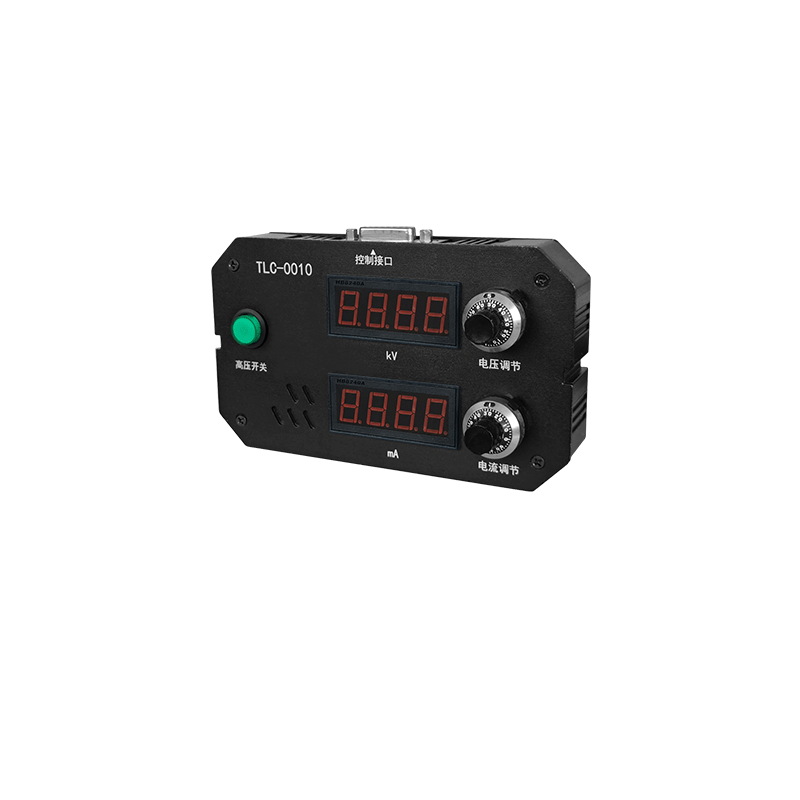Research on Key Technologies for Improving Uniformity of Electrostatic Flocking Power Supply
Electrostatic flocking technology utilizes a high-voltage electric field to drive charged fibers to adhere vertically to a substrate, forming a uniform and dense pile surface. Its core lies in the stability and precision control of the high-voltage power supply, which directly affects flocking uniformity, density, and product yield. This article explores solutions for improving power supply uniformity from three aspects: electric field control, environmental adaptability, and intelligent technology.
1. Optimization of Electric Field Strength and Stability
1. Precision Voltage Control
The electric field strength for electrostatic flocking must be maintained within 40–60 kV. Voltage below 40 kV results in insufficient fiber kinetic energy, causing sparse flocking and fiber collapse, while exceeding 60 kV triggers air ionization, leading to fiber dispersion or adhesive breakdown. Dual closed-loop voltage-current control technology reduces output voltage ripple to <0.1% of peak-to-peak value, ensuring constant electric field force for vertical fiber alignment and uniform distribution.
2. Enhanced Current Stability
Current fluctuations cause charge dissipation, leading to uneven fiber charging. Pulse modulation technology (e.g., 100 μs pulses) precisely regulates charge release rates, preventing accumulation or loss, and guarantees consistent charge per fiber for uniform adhesion.
2. Active Compensation for Environmental Interference
1. Humidity-Adaptive Adjustment
Ambient humidity (RH) significantly impacts charge attenuation: high humidity neutralizes fiber surface charges, reducing adhesion. A humidity compensation model (effective at RH 45%–65%) dynamically adjusts power supply frequency (50–100 kHz) to stabilize fiber trajectories. For example, increasing frequency in high humidity enhances electric field penetration to counteract charge decay.
2. Electric Field Adaptation for Complex Shapes
Irregular substrates (e.g., automotive interiors) suffer from edge sparse flocking under uniform fields. A multi-electrode array system with 16-channel independent voltage control (±5% accuracy) compensates edge field strength, improving flocking qualification rates to 98.6% for complex parts.
3. Integration of Intelligent Control Systems
1. Real-Time Closed-Loop Feedback
Machine vision monitors flocking density, and PID algorithms dynamically adjust voltage parameters. For instance, detecting low local density triggers automatic field intensification, reducing defect rates to <0.3‰.
2. Energy Efficiency Synergy
High-voltage power consumes 35%–40% of total production energy. IGBT frequency conversion modules and smart algorithms optimize spatial field distribution, cutting energy per unit area by 22% while maintaining uniformity.
4. Frontiers of Technology Integration
1. Advanced Material Applications
Carbon nanotube-doped conductive fibers increase conductivity by three orders of magnitude. Combined with microsecond pulsed high voltage, they enable micron-scale patterned flocking, surpassing traditional uniformity limits.
2. Cross-Domain Technology Fusion
Integrating dielectric barrier discharge (DBD) with electrostatic flocking modifies substrate surfaces synchronously, boosting fiber-substrate bond strength by 40% and reducing density deviations from post-processing.
Conclusion
Improving electrostatic flocking uniformity requires integrated voltage precision, environmental compensation, and intelligent feedback. Core advancements in power electronics enable dynamic electric field optimization. Future integration of nanomaterials and interdisciplinary technologies will advance uniformity to sub-micron precision, expanding into biomedical devices and flexible electronics.




















